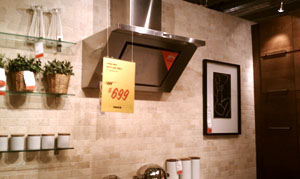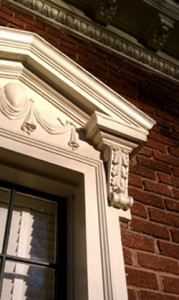 Every major city I’ve visited — New York, San Francisco — has blown me away with one amazing aspect: its main park.
Every major city I’ve visited — New York, San Francisco — has blown me away with one amazing aspect: its main park.
Whether I’m in Central Park in Manhattan, Golden Gate Park in San Francisco or Lumpini Park in Bangkok, I can’t help but notice a few common threads: these spaces are gorgeous, centrally located, and bursting with life and energy and impromptu music. Where else can you find a combination of exquisite landscaping, an impeccable view of the city, and spend an afternoon with dog-walkers and drummers — totally for free?
So when I moved to Atlanta, I was sure about one thing: I’d live within walking distance to Piedmont Park, this city’s most thriving central park.
My then-boyfriend and I found rental two blocks from the park. Even by urban standards, it’s cramped: our kitchen is so small that only one person can fit inside at a time. If I want to wash the dishes while someone tries to cook an egg over the stove, there will be a collision. One of us will just have to wait.
There are a total of 5 people, myself included, who share this cramped three-bedroom apartment: two couples, plus one single person, all living as roommates in less than 1000 square feet.
My personal share of the rent is $200 per month; the total rent on this three-bedroom apartment is $1,200, but that’s split between five people. Our apartment is one of three units within a triplex.
The Urge to Upgrade

At the same time, we didn’t want to give up our coveted location. We can walk anywhere we want to go: restaurants, bars, the grocery store, the yoga studio, the movie theater: everything we could possibly want is within a five minute walk. Given the awful Atlanta traffic, this is a Godsend.
So when we noticed the much-bigger triplex across the street was for sale, we were immediately interested. Perhaps this was our shot at owning a larger home without sacrificing our location.
We called the selling agent, who explained that the building for sale was divided into three units. One unit is enormous and occupies two-thirds of the building, featuring bedrooms upstairs and a gigantic kitchen, living room and sun room downstairs. The other two units are single-bedrooms stacked on top of each other on the north end of the house.
She gave us the rental figures, the property tax history, and the past 24 months of water bills. We crunched the numbers. If we rented the two single-bedroom units at their current rate, and brought two of our roommates to live with us in the large unit, then the rental income we’d collect could cover everything: mortgage, insurance, taxes and water. In theory, my then-boyfriend (now ex) and I could live there for free — in theory.
It would be a no-brainer, if the house weren’t in such horrid condition.
Bob Vila’s Worst Nightmare

The home’s structural instability is the reason no one else snapped up this deal: the triplex had been sitting on the market for 16 months by the time we inquired about it. The owner could no longer keep up with the exhausting costs of maintaining the house. He was heading for foreclosure, and willing to sell it for less than what he owed.
Its sinking foundation is just one example of a bevy of problems. The house has no gutters, so rainwater rotted out the floorboards around the entrance doors. When you step inside you feel as through you’re sinking into the ground. The pipes under a second-floor bathroom recently burst, leaking sewage all over the downstairs walls and staining the ceilings. The fixtures are ugly: nothing had been updated since the 1970’s. The bathroom tiles are cracked. The kitchen cabinets are lopsided (thanks to the sinking foundation). The laminate over the countertops is peeling away. The worn-out carpet reeks of cat urine.
Being the Right Buyer
The condition was abysmal. It was obvious why this structure had been sitting on the market for 16 months. Foreclosure seemed to be the owner’s only chance at getting rid of it.
My now-ex is a civil engineer who put himself through college by rehabilitating houses. He spent several hours in the houses’ crawl space, studying and photographing every support beam. He emerged that evening, dirty and sore, declaring the foundation “fixable.”
“It’s a rotting house on a bad foundation,” he said, “but it’s not a wet sponge on toothpick. It’s fixable.”
As for me? I simply love a great deal. We knew the seller was super-motivated to get this house off his hands.
The seller’s asking price was $400,000. We offered $225,000. He immediately accepted.
We crunched the numbers again. If we paid “rent” to ourselves, in the same amount that our roommates would be paying, and if we managed the fix-it work ourselves, we can maintain this house.
Realistically, it will take at least two years to stabilize the foundation, hang gutters, replace the roof, fix the pipes, rip out the floorboards, replace the rotting siding, and bring the house to a modicum of stability. It’ll take another five years, at least, to update the cosmetics so that the house is attractive.
But if the enormous cost of repairs and maintenance is our only out-of-pocket expense — our roommates and renters will take care of the mortgage, taxes and insurance — then we can make this work.
We can own a kitchen big enough to fit 10 people inside — and still walk to Atlanta’s most vibrant central park.
UPDATE 2012: This house is embarrassingly profitable! It’s brought FAR more money than we expected. Here’s a breakdown of the income and expenses.
Updated in 2020 to reflect relationship status.
